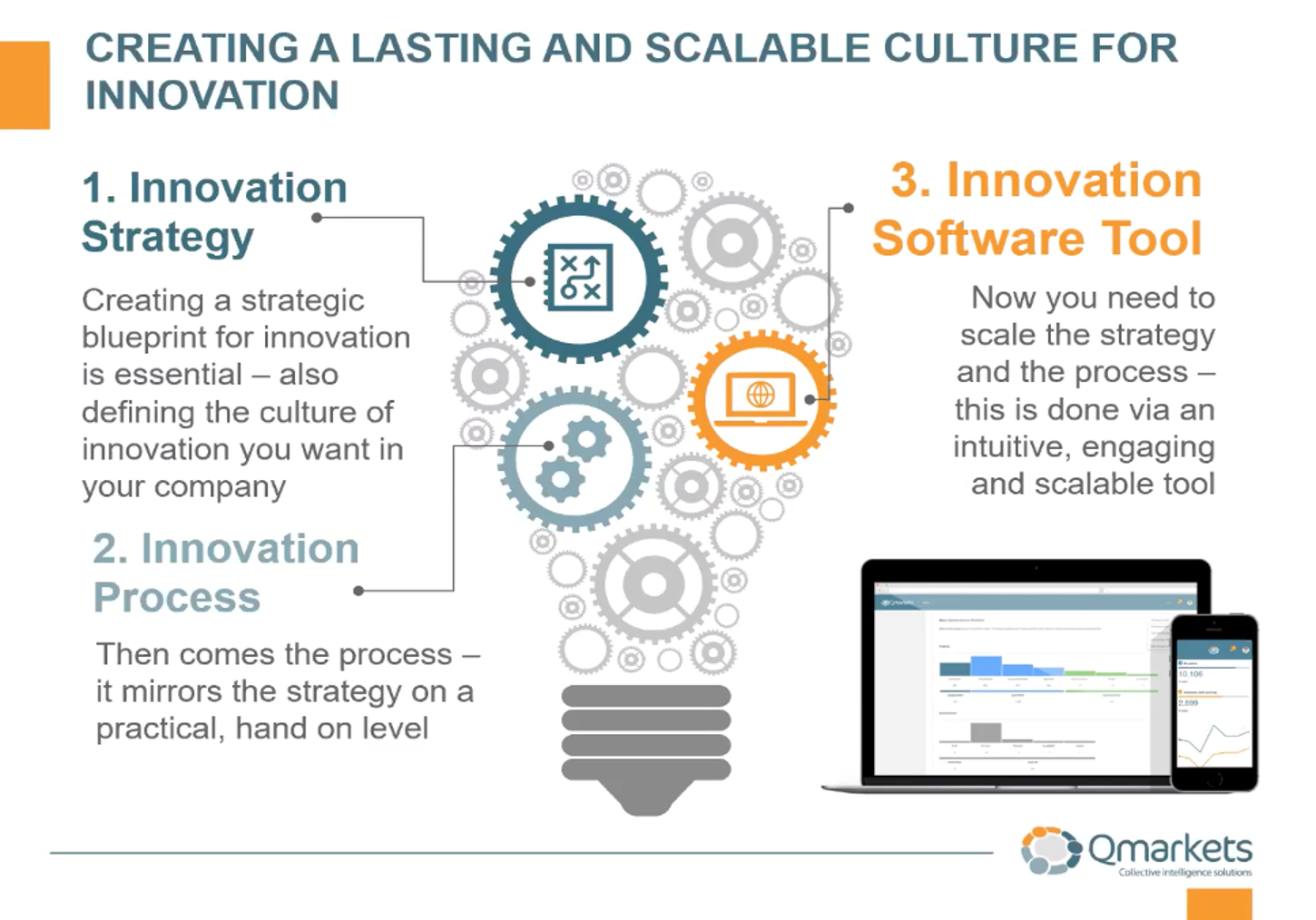
by WiseOcean | Sep 17, 2020 | Digital Innovation Leaders, Open Innovation
The speed of changes at the global range is accelerating because of the intersection of AI and multiple other new technologies such as IoT, edge computing, quantum computing, robotics, 5G, human-machine interface technology, Blockchain, distributed ledger technology, and smart contracts, etc. Knowledge building is exploding but happens in too many silos. And because of the complexity, no one has all the answers, collective intelligence or sustainable collaboration becomes more important than ever.
Qmarkets, a company supporting open innovation across 500+ companies for 12 years, was founded in 2008 by three people on a kitchen table. It’s inspired by the crowdsourcing process – the wisdom and knowledge of a large crowd. And with that, the organizations can make more qualified decisions than an individual.
Recently we had a chat with one of the co-founders & Senior Vice President, Michael Stilger, and Director of Innovation Solutions, Steve Reed. The highlights of the conversation are below.
The Maturity/Evolution of Corporate Innovation
The evolution of ideation, from the suggestion box over post-its which are sticking everywhere, to the spreadsheets and manually managing ideas, to have automated ideation papers plus spreadsheets, to a full-blown, modern end to end ideation system including next-generation AI features.
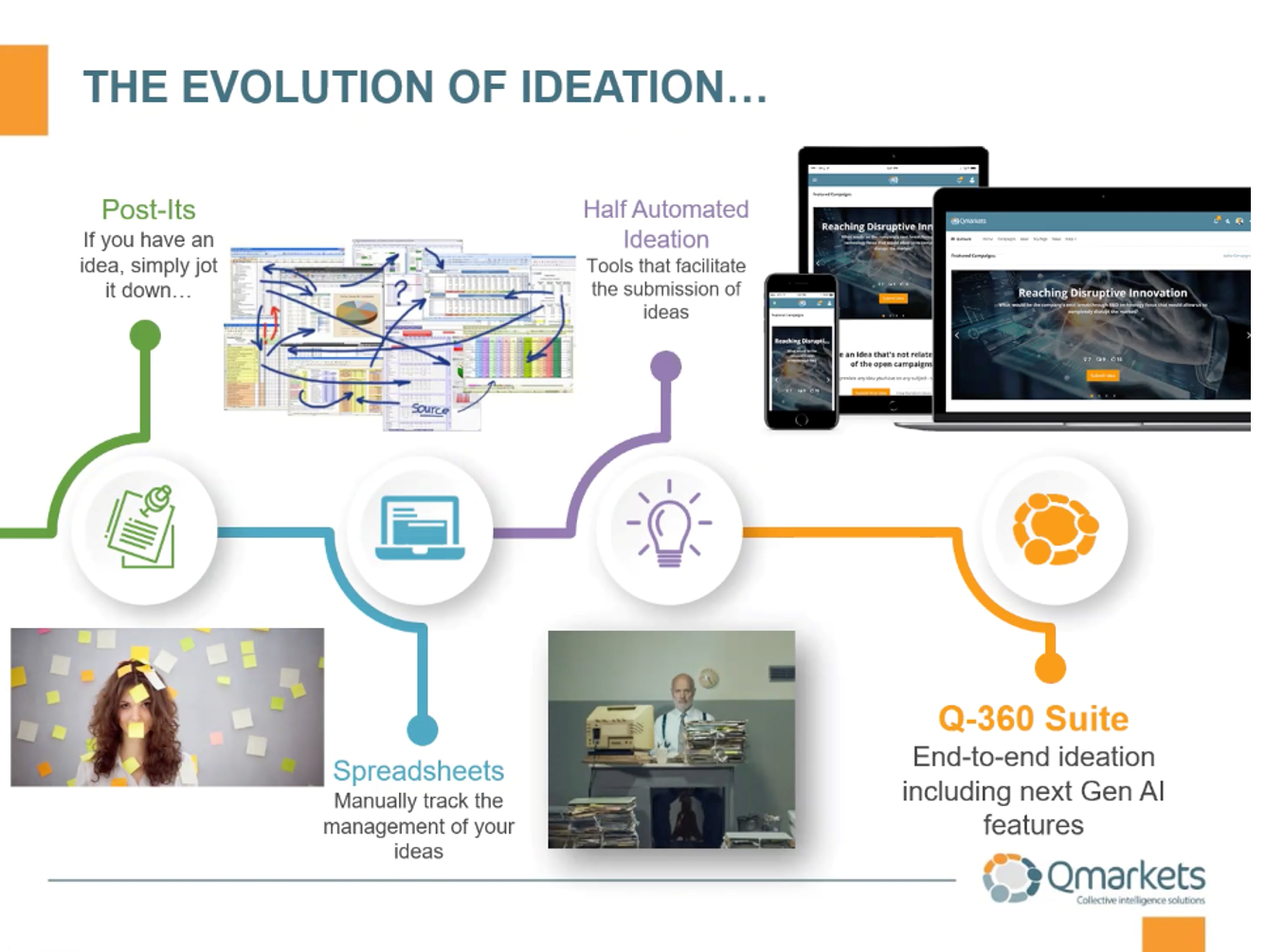
For a company today in globalization, there are knowledge pockets in different departments or company locations. An ideation system with AI breaks up these silos and lets them all come together. The software lets you capture trends or problems. And based on those problems, you can find solutions.
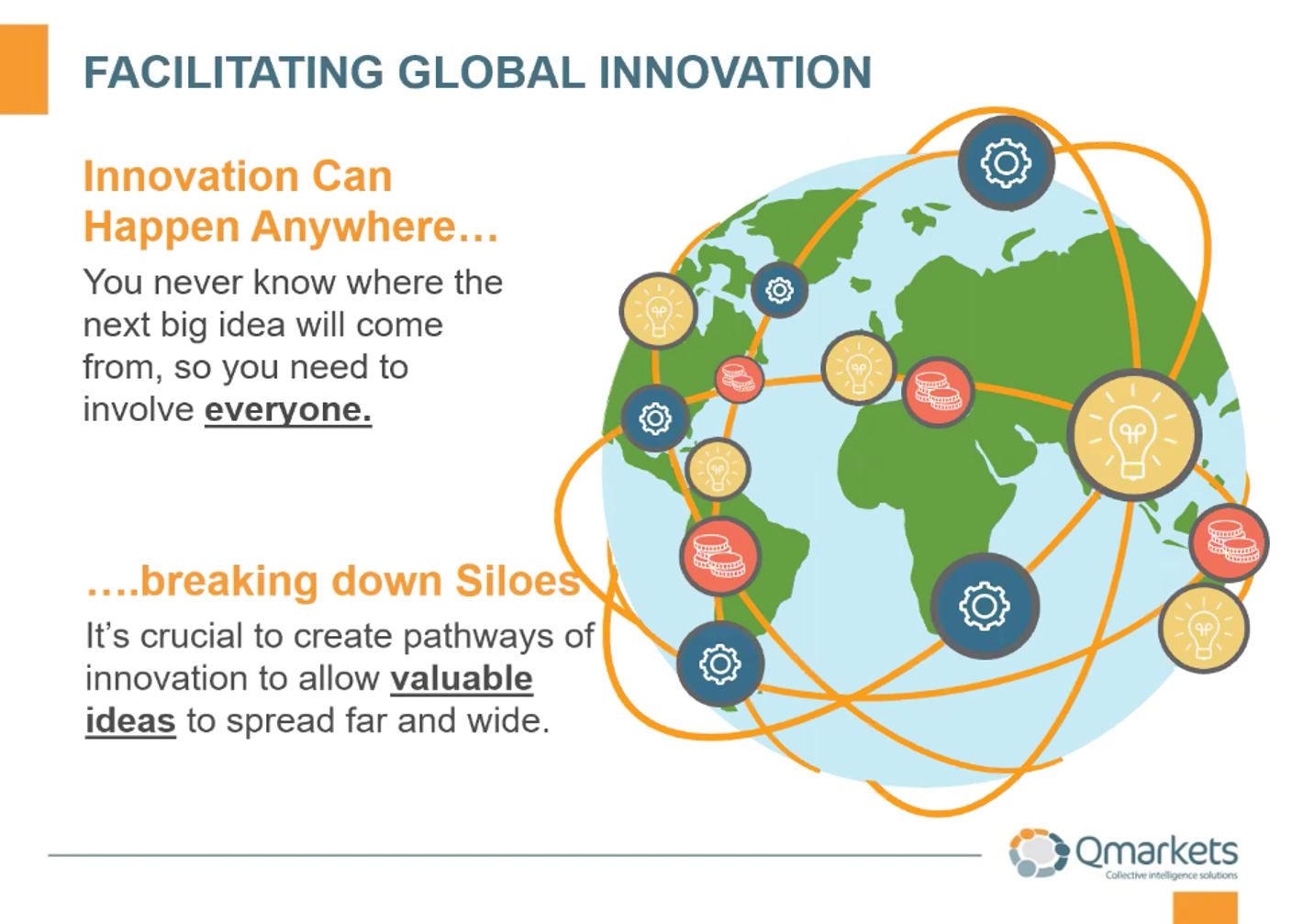
You have all the trends from all sides that come into the market, which can be small trends or big trends. It could be social media content or big data… It doesn’t matter whether it comes from startups, suppliers, customers, citizens, or business partners. You have all these trends hit the company that is relevant for you. Then these trends get generated into challenges, then you ask your employees, your customers, your partners to come up with great ideas or you scout new technology, new startups.
Then you take these ideas and incubate them, prototype them, experiment and launch, measure the ROI and outcomes of new technologies, new products, new materials. You process new IP, brand, strengthening revenue or savings. Different processes are needed for different purposes. For example, there are “fail-fast” types or “incremental improvement” types. (Qmarkets covers all the processes)
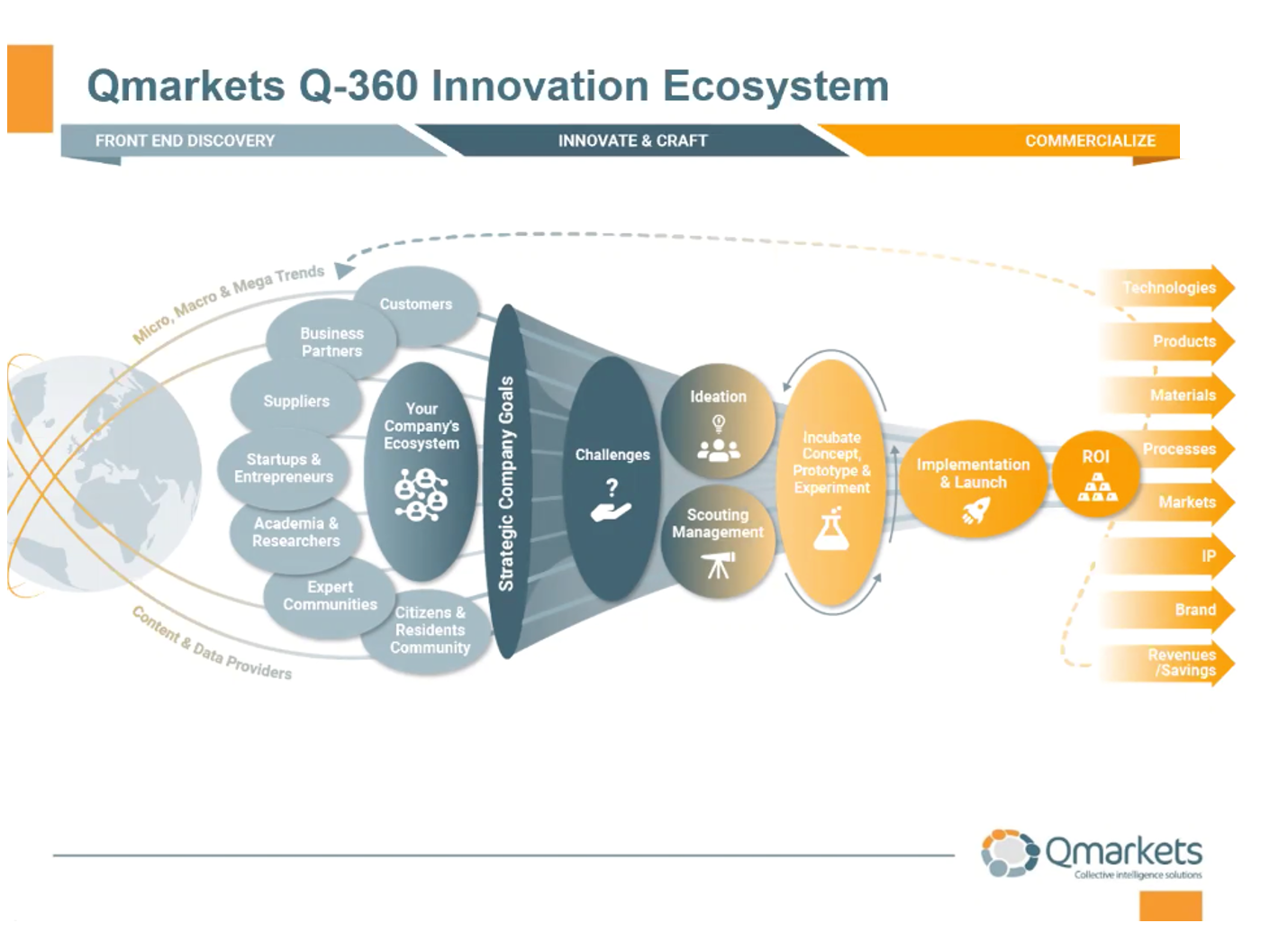
Innovation’s 3 Key Elements
- What is important is in an organization, you need to create a culture of innovation. (Please refer to the image on the next page)
- There is a strategy, like 3M or Apple give their employee half a day per week to stop working and to think of new ideas. There is an innovation process, how to do it. And they have a tool and can scale it across the whole organization and reach the wisdom of the crowd.
- In an organization, you need all three things to create a culture of innovation. When you have these three things, You have a winner. But if you only have one of these things or two of these things, it can work, but they usually struggle …

Some Success Stories
Utility Provider
- For Utility Provides, customers have no loyalty. The electricity comes out of the socket. It doesn’t matter where it comes from as long as it’s the cheapest. This is a challenge. This is a global trend for utility companies.
- How RTE, a utility provider and high-voltage transmission system operator in Europe, uses the wisdom of the crowd, their employee, to improve this problem?
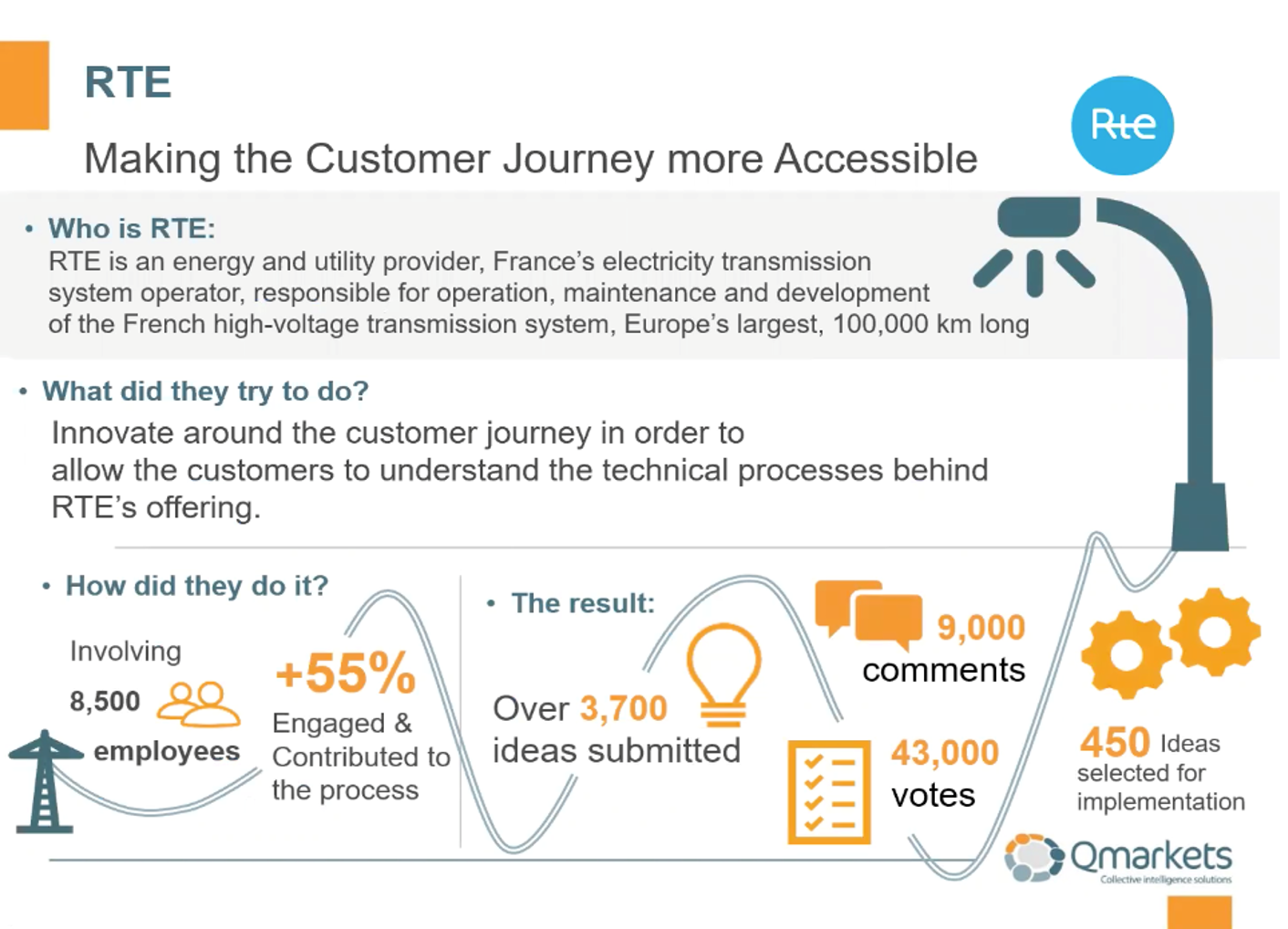
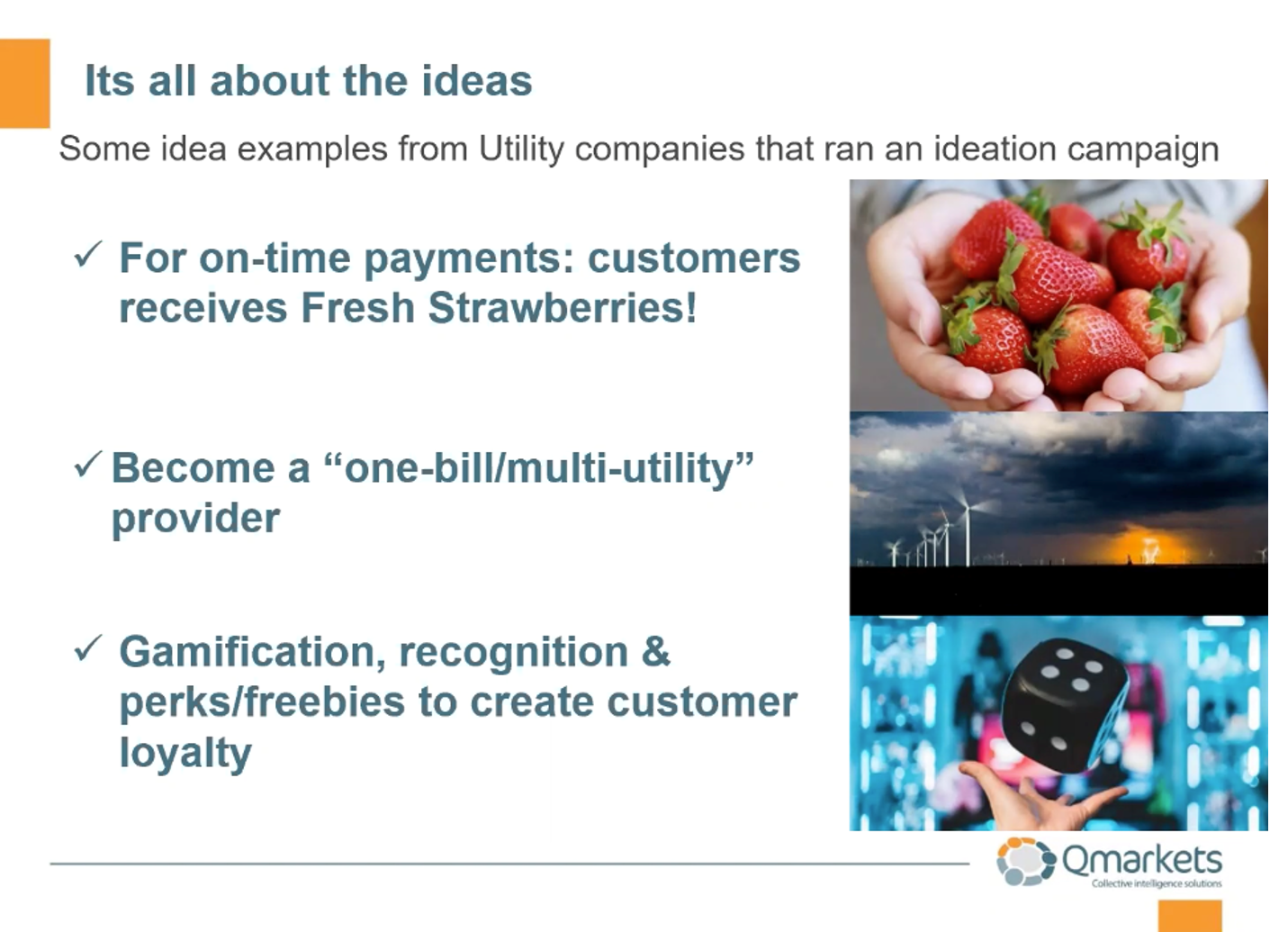
Truck Manufacturer
The whole world is terribly impacted by the Coronavirus pandemic since 2020 started. How Ford Otosan, a truck manufacturing company in Turkey, adopts and leverages the wisdom of its employees for this Coronavirus pandemic to help local hospitals and health workers?
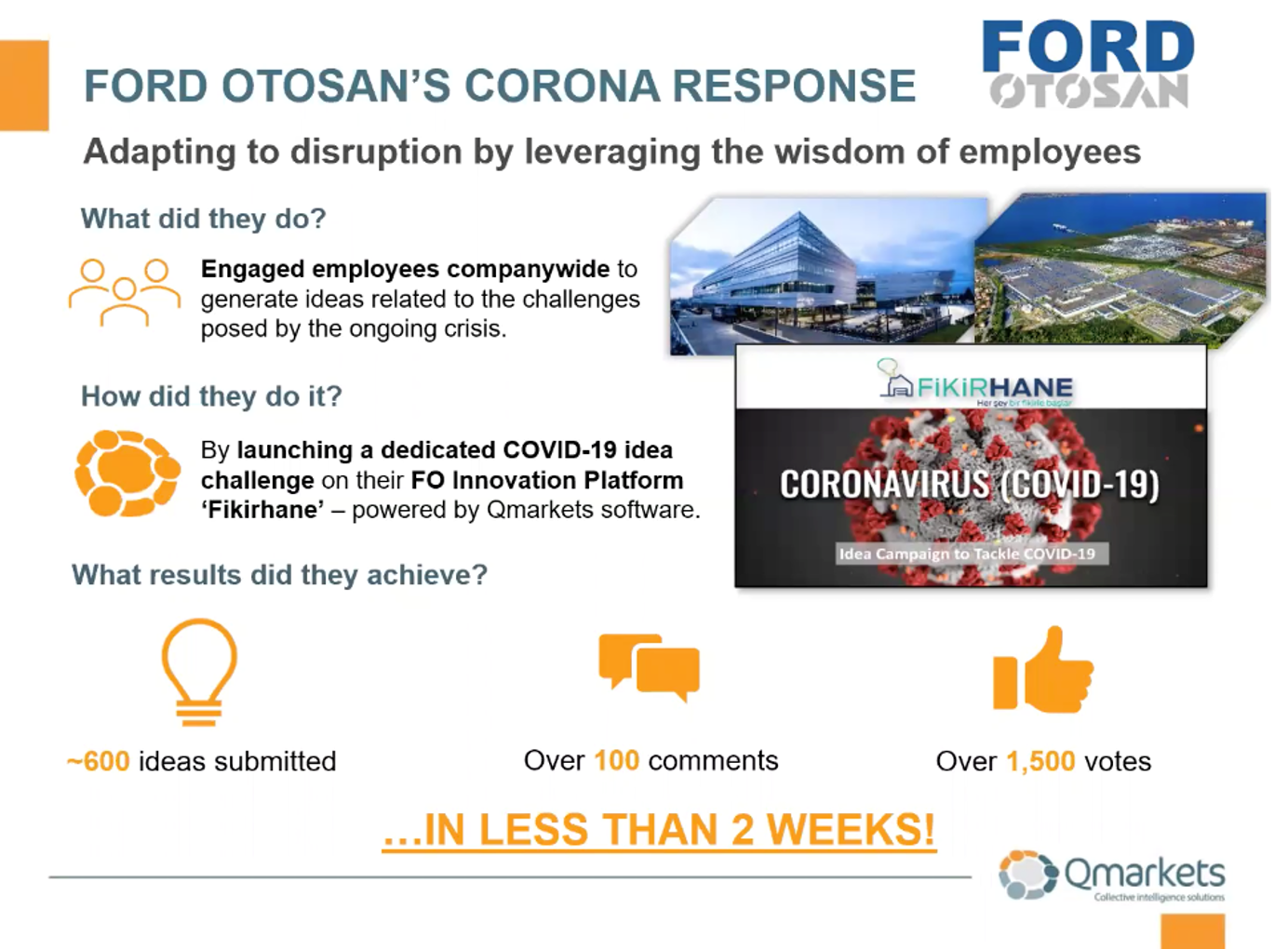
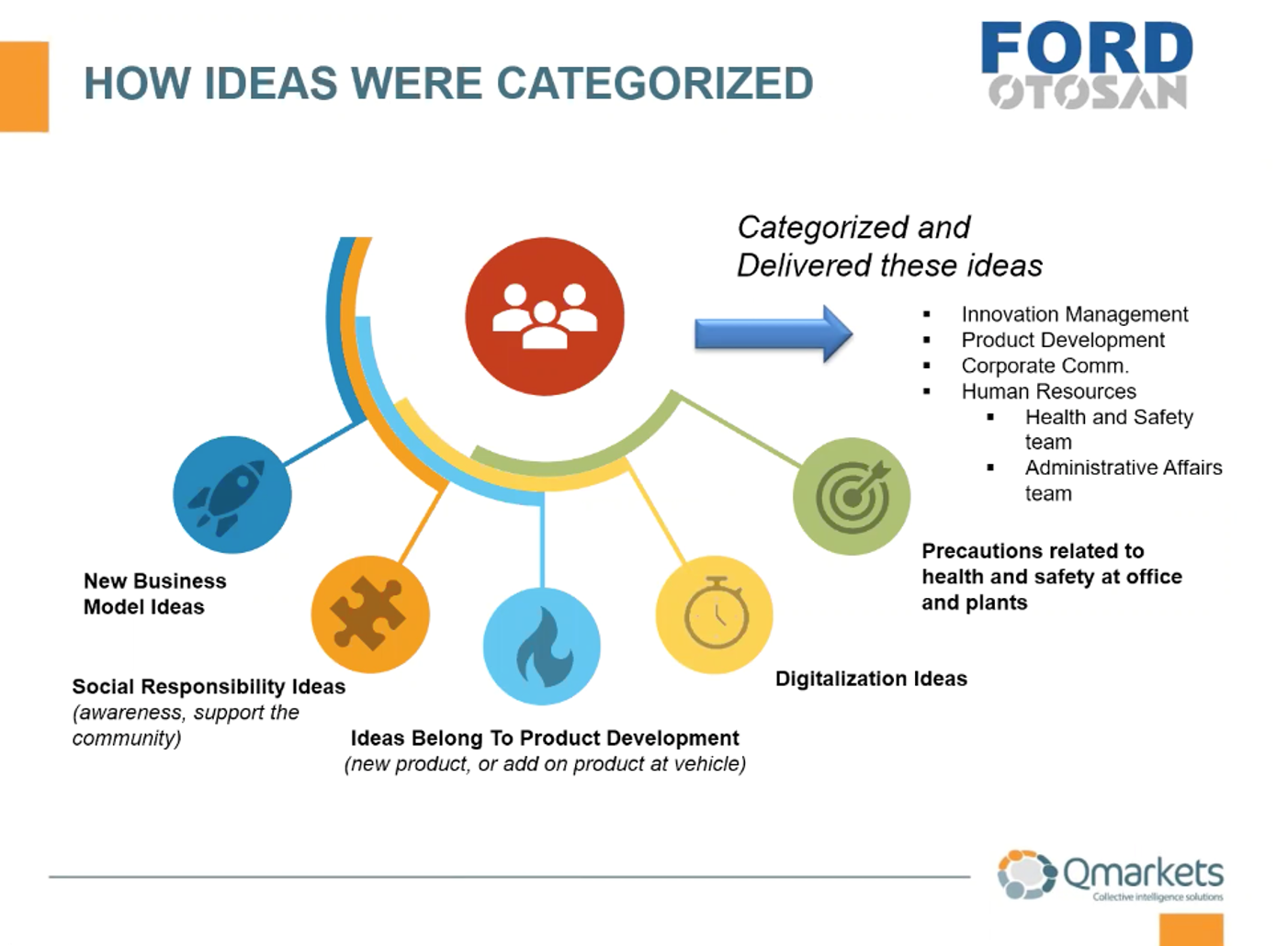
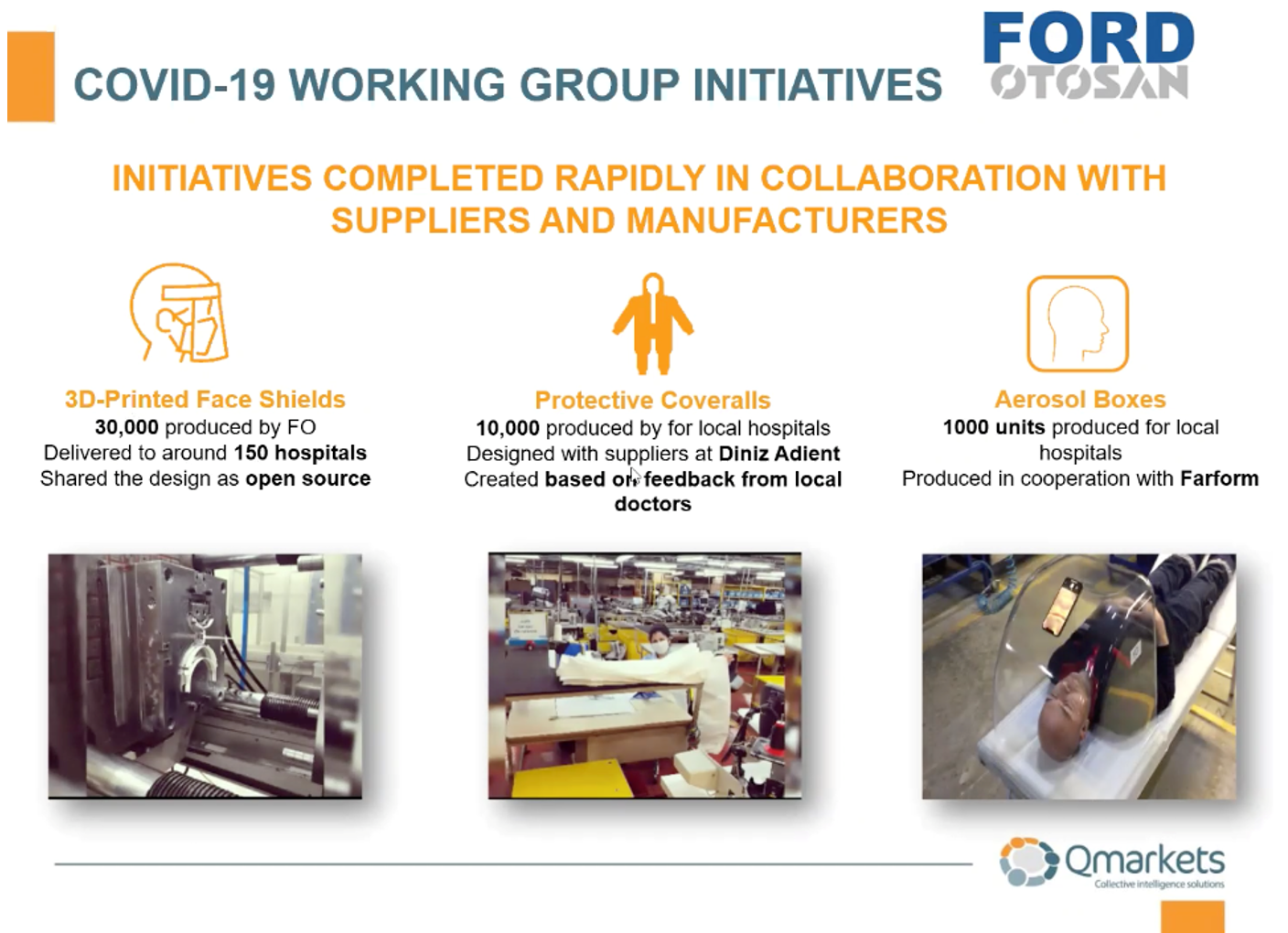
Food and Drink Company
The world’s largest food company Nestle, a Swiss multinational food and drink processing conglomerate corporation headquartered Switzerland, adopts and leverages the wisdom of start-ups worldwide. By connecting the brightest ideas and innovation with Nestle’s businesses, expertise, and market insights, start-ups and Nestle can make the biggest possible impact.
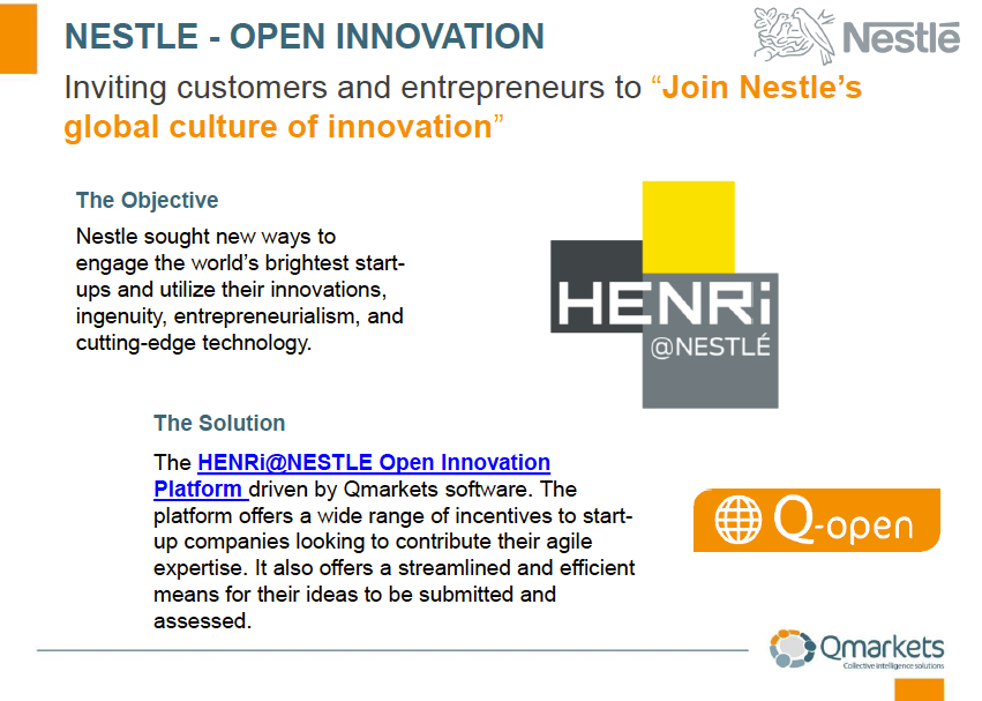
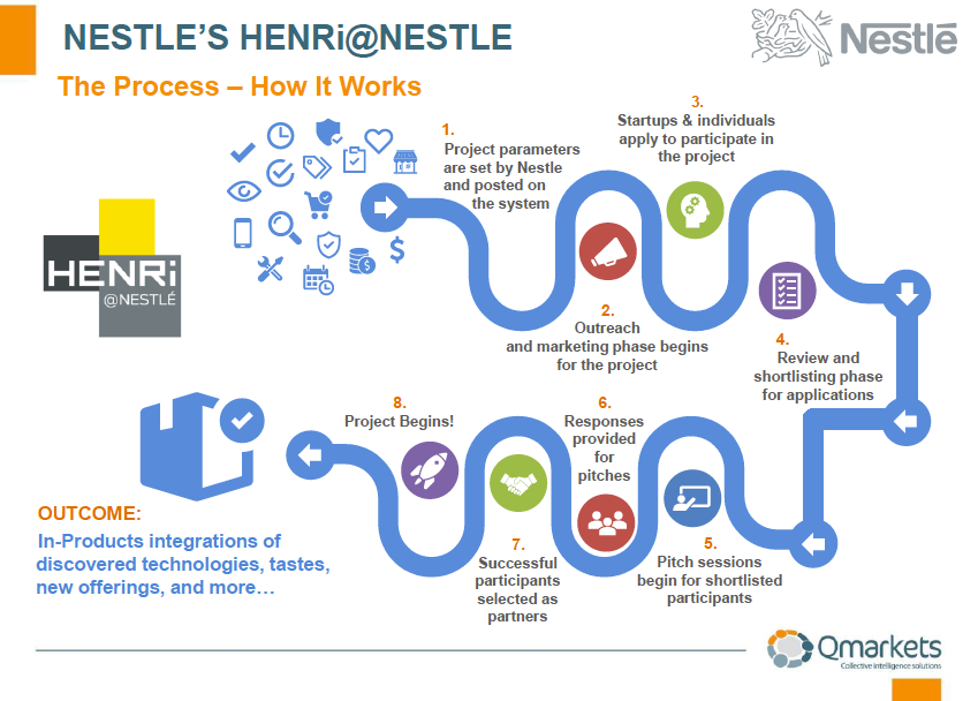
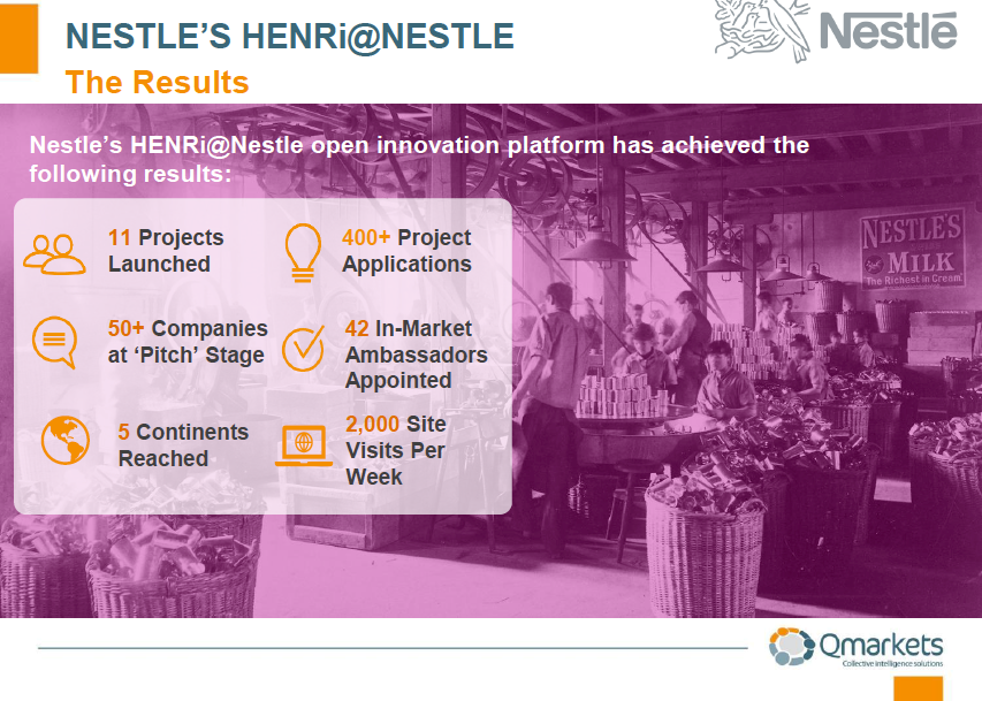
Enterprises are facing many pressures such as cost-down, customer experience improvement, or technology development. Democratizing insights improve the decision process and productivity. Collaboration between internal and external innovators also enhances the workplace culture as well as the speed of innovation. The innovation process needs a digital transformation to support the scale and speed.
We are excited to partner with Qmarkets and provide a free space for companies that want to try open innovation, you can test it out here, it’s our community service. (welcome to discuss ideas with us, we will help set it up, the ideas and process can be set confidential)
We also put up a “Corporate Digital Transformation” challenge campaign that startups or professionals are welcome to submit solutions or ideas. Technology implementation or digital transformation isn’t easy and what works might vary from company to company, the ideation and discussions for developing proof of concept (PoC) on implementation are important.
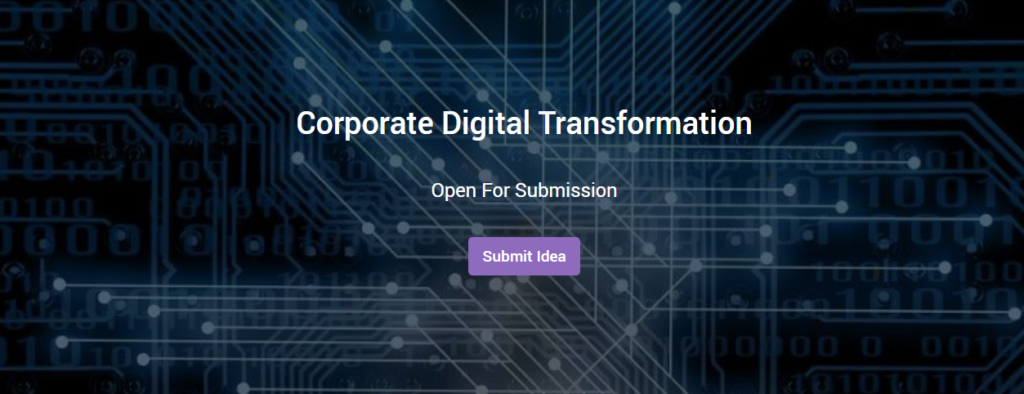

by WiseOcean | Sep 15, 2020 | Major Trends
Coronavirus Innovation Map is a platform of hundreds of innovations and solutions from around the world that help people cope and adapt to life amid the coronavirus pandemic, and to connect innovators.
The CoronaVirus Innovation Map is a visualized global database that is mapping the innovations related to tackling coronavirus in various fields such as diagnostics, treatment, lifestyle changes, etc., on a geographical scale. Listings are added by the research teams of StartupBlink and the partners, as well as crowdsourced by the global community. In fact, anyone can suggest an initiative to be added!
StartupBlink has innovative proprietary technology databases and algorithms that we use to map startup ecosystems and innovation. This puts us in a position to produce customized databases depending on the type of innovation at hand. The technology required is ready and since COVID-19 has sparked a lot of innovation because of its novel status, StartupBlink is able to gather more data about this innovation and reflect it on our database that is already being used as a resource for startup ecosystem innovation.
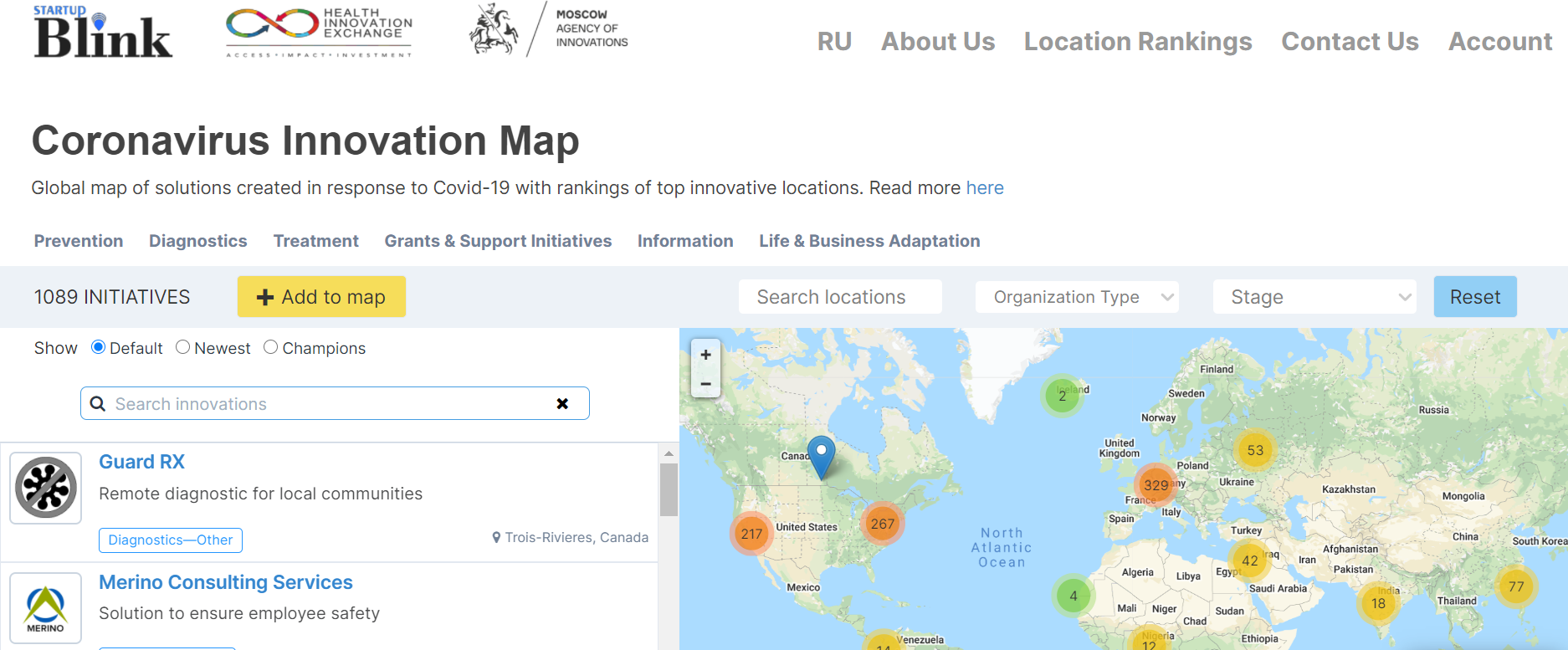
We are glad to have a brief interview with StartupBlink CEO Eli David to get his high-level observation on the innovation landscape in 2020.
Q1 : What are the major changes in startup ecosystems in 2020?
The major changes in the startup ecosystem in 2020 is, of course, the digitalization. And anything that can provide the solution in a way that does not involve humans is become very, very attractive compared to others.
Q2 : Among these changes, what do you expect will have a lasting impact after COVID-19?
Let’s say startups that have to do with the more physical ecosystem like tourism, aviation, are definitely received quite a hit. So, there are clear winners in 2020 compared to also clear losers as well. Also a lot of startups that were not so relevant, are disappearing. So, 2020 is not a major crisis here. It’s just a year of change, in a very, very deep change.
The lasting impact after COVID-19, the digital world anything that has to do with online experiences is going to receive more attention from people. I think remote work is going to be have a very lasting impact. Now that culturally, it is allowed to think in remote work, there’s going to be a lot of impacts.
Q3: Regarding technology and innovation developments, what is accelerated, and what is slowing down in 2020?
Actually, the online world is going to receive a lot more of our attention and budget compared to the offline world. Basically, the entire world is moving online. So, anything that can accelerate that is very successful, and anything that has to do with the physical world has been slowed down massively and suffered the most, we all know them.
Q4: Do you see startups/small businesses adopt more automation on AI solutions to enhance their productivity and agility?
Yeah, I think startups will definitely adopt more AI solutions. However, the problem is that, for small businesses, they have a problem to adopt AI because AI is usually very expensive. So, I have a feeling there’s going to be more than anything. The corporate and AI is going to help the corporate even get more market share. And the startups themselves are going to try to develop something unique and then sell it to the corporate just like always. But there is a limit over here, that the bigger companies, the more it has advantages and relatively small startups cannot really compete with them and that’s always a problem. But it’s more than anything a problem right now.
Q5: What do startups or scale-ups need the most from startup ecosystem builders in 2020?
The startup ecosystem builders in 2020 have to be active. They have to help ecosystems, they have to be more than anything to work on the infrastructure of the ecosystems, and help startups and founders fulfill their potential. And we’re talking more than anything about removing red tape, bureaucracy, and also promoting direct systems to make sure that people know about their ecosystems, because ecosystems basically are competing for talent, and that’s always important.
Q6: What are those startup ecosystems builders that have done an impressive job to support startups this year? (1~3 examples on top of your mind)
I think the ones that have done really good work, I have a few examples. I like the examples of the relatively smaller location. And one that comes to mind is Kingston in Canada. It’s a relatively small city, close to the bigger cities in Canada, but still managing to differentiate and be successful and those are exactly the examples we’d like to see. Kingston is working heavily with the good universities in Kingston, mainly Queen’s University. And they’re managing to do a very impressive job in attracting people from outside of Kingston and also keeping their own local talent without leaving.
The same is happening in the Sunshine Coast in Australia, another example of a relatively small city. These very, very active on the promotion of the tech system and the development. I think it’s another nice example of how a relatively smaller city can be very successful in promoting and enhancing their ecosystem.
One more example would probably be the municipality or the chambers of commerce in Cali in Colombia, they’re also doing a great job to compete with a bigger city and create creative regional hubs. So, it’s always nice to see the quality of the work from the ecosystem developers of the smaller locations.
Q7: What are those startups that have done an impressive job to pivot and innovate this year? (1~3 examples on top of your mind)
As for the startups, I have to say that I can’t really think about specific examples, but I will tell you that the startups that I like seeing the most are the ones that have pivoted this year, instead of waiting for a normal life to come back, the startups actually leveraged on this crisis, change their business model, and are very, very flexible.
And I think a few examples can show that. The biggest one is probably is Zoom and Peloton, and companies that have seen the demand for the products really increase and keep on customizing it based on a new reality. We have a COVID-19 map at coronavirus.startupblink.com built together with United Nations that actually features more than 1000 startups that are innovating. There is so many, many startups are innovating on prevention and diagnostics, so it’s absolutely great to see.
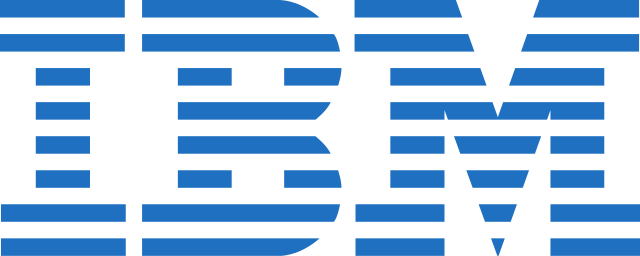
by WiseOcean | Sep 14, 2020 | AI Digital Transformation, Corporate L&D, Talent Digitalization
IBM has been a big blue giant and an AI leader in our memory, its Deep Blue won over the human master at chess in 1997, its Watson won Jeopardy! in 2011, its Project Debater can debate with humans on complex topics. Now IBM’s AI technology has been used in many tough quests from picking stocks to knowledge discovery. How does the Big Blue use AI to transform itself and keep its competitive edge? It all started with transforming its people with personalized development at scale, which isn’t possible without Learning Engineering constructed by experts then automated by AI. Vinod Uniyal, Chief Technology Officer (CTO) of Talent & Transformation at IBM, had a chat with us to share how it works under the hood.

Highlighted quotes:
Five to seven years ago, when we started looking at new technology areas such as cloud, data science, artificial intelligence in a much more meaningful way. That is when we started our transformation, that transformation meant not only changing the way we work, the culture of the organization, the structure of the organization, but also, you know, how do we develop the talent and the skills that we needed for this transformation to be successful. … we also tell our clients that the starting point is understanding the skills that you have.
I already talked about the skills inference, understanding your current skills, then the second step is understanding future skills.
Think about the ways in which you would probably want to ask people — give me what skills do you have, give them a form and ask them “do you have this skill, that skill” — It doesn’t work, it’s a broken process, the only way we can make it work is to automate it by using AI and continuously training. Those algorithms over a period of time will become automated processes, and then it is available all the time. That’s the only way it can work at scale.
There is a big transformation that needs to be made to get to where we are now. The starting point is to build digital literacy, not only in L&D department but also in the entire organization. So everyone has a basic understanding of digital transformation, digital skills, the value of data, how we can leverage data. Having that, the adoption becomes easier. At the same time, the L&D and HR departments look very different today, and they are supposed to look different. The organizations that want to leverage data, AI and all these technologies will need to have certain data skills internally although they can work with service providers.
Jessie: Could you introduce yourself and your role at IBM to us?
My role at IBM is to lead technology for talent development practice, not only for learning and development but also the skills transformation, working at the intersection of AI, Cloud Technologies and Talent. I am very passionate about what I am doing. I am responsible for creating the offering, the Talent Platform and the Ecosystem of IBM learning and skilling solutions for clients and I also work with the clients. I also work with IBM internal HR service team very closely because the solutions we have developed and are being used within IBM, and we take the same solutions to the market. I’ve led the commercialization of many internal solutions. For example, “IBM Your Learning” is a learning SaaS multi-tenant platform where IBM employees go to learn, it was developed for our employees first and then extended to the public and commercial clients later.
We actually see IBM as our first client when we develop learning solutions. I would say that helps us build solutions from a customer-centric mindset, and not to see it as an internal thing. Even our internal employees are our customers. I would like to add that we’ve had many people in our internal IBM HR organization who have actually moved into our consulting practice and the other way around also, so we know exactly what is going on (emerging best practices) in IBM HR.
Jessie: Could you talk about the L&D digital transformation history at IBM?
IBM is almost a 109-year-old company by now. It is still surviving and thriving because IBM has transformed itself over and over again. But if you just talk about the last significant transformation, I think it happened about five to seven years ago, when we started looking at new technology areas such as cloud, data science, artificial intelligence in a much more meaningful way. That is when we started our transformation, that transformation meant not only changing the way we work, the culture of the organization, the structure of the organization, but also, you know, how do we develop the talent and the skills that we needed for this transformation to be successful.
And there have been a lot of strategies that we have used in order to accomplish that kind of skills transformation. I’ll talk about some of those strategies here. So one of the key things there is to understand the skills that we have currently. And this is what we also tell our clients that the starting point is understanding the skills that you have.
Lot of surveys that we have done with the chief executives, most of the chief executives tell us that they really do not know what skills they currently have in their organization. They also struggle in saying that they have all the skills that they need in order to meet their strategic business objectives.
In IBM, since it is such a large scale, you know, we have ~360 thousand employees, what we have done internally is we use skills inference to understand the current skills. What I mean by skills inference is using the digital footprint of the employees to infer the skills from the data, right. So, we use more than 26 data sources as of today, which are internal data sources. Think of your internal intranet, like the collaboration portal where we are posting something, the places where we put our delivery, our internal performance management, those kinds of things where some sort of contributions or deliverables are shared by people, and of course, the training — the kind of training and coaching somebody is undergoing.
So we look at all these data sources and try to infer the skills of the people. So once that has been done, then we present these skills in terms of a skills profile to the employee, we show them that these are the current skills that you have.
Now the second step in skills transformation is to understand the skills that you need for the future. And then the third step is to close that skills gap. And I’ll just repeat it so that we make it a very simple process.
I already talked about the skills inference, understanding your current skills, then the second step is understanding future skills. That is something you can do based on your strategy, interviewing the business leaders, looking at what the trends are, where you want to go and all that. So for IBM, these skills were, probably Cloud, Analytics, AI, Data Science, on the hard skills side, then there are certain ways of working or soft skills, such as Enterprise Design Thinking, Agile, and all other skills like Negotiation, Effective Communication, etc. So basically, we went into certain technology areas and also changed the way we work. You know, how do you work, and for us enterprise design thinking and agile is something which is ingrained into everything we do, including the learning and development department as well. That’s a big change for such a large organization. IBM was supposed to be this big Elephant, the Big Blue, and supposed to move slowly. But in the last five years, I’ve seen tremendous change in IBM.
So, remote work culture, the agile working culture is something that is ingrained. Now, one of the key aspects is once you know that these are the skills that we need, these are the job roles that we need more in the future, you also need to transparently communicate this to your employees, right? So, transparency is very, very important. And I would say once you have that transparency it builds trust, so employees know and understand what the organization actually needs, they will be wanting to learn more, they will say “I want to become a data scientist” or “I want to learn AI or Analytics” or something else…and that has happened in IBM. So, once you have transparently communicated the hot skills and the hot roles, then you should help the employees to understand their skill gaps.
I personally believe in super personalization. The learning that you have available should be personalized to you so that it is relevant for you. Think about Netflix as an example where you get personalized recommendations and you just get hooked on to it. So, similarly learning for us works in the same manner, so, what you are interested in, what people like you are interested in, that is what gets recommended to you. Those AI based personal recommendations actually work like magic in creating that engagement, super engagement in terms of learning.
And I would say it is not only limited to learning, but it goes beyond that because learning doesn’t happen only by consuming digital content, you need to also share it with others, practice what you’ve learned, and then have opportunities to perform tasks and use those skills. So all these elements have to come into play for you to really build those skills.
So that means: learn, share it with others, get coaching from people (like people who are experts in those skills that you are interested in) then get certain opportunities, which we call as internal gig economy so that you can practice those skills in those ad-hoc projects. And once you build those skills, then you get personalized recommendations for jobs which are available internally, so that you can actually move into those different roles.
So this JML (Join-Move-Leave) employee lifecycle, I’ve expanded the cycle to something which I call join, learn, share, grow, and then move internally. That’s the entire life cycle of talent development and skills transformation.
Jessie: Thanks for giving us a whole picture, and simplifying the steps, but the most difficult is the skill modeling. How does IBM do skill inferencing? How to verify the inference? What is IBM Talent Framework? How is it built? How does it work in IBM’s learning ecosystem and support personalized learning? How should an organization use it?
Yeah, I made it very simple. But it is not, the devil is in the details. You’re absolutely right. There are two parts to it. The first step is understanding the skills, you definitely need a base, you need to have a definition of skills, which we call the taxonomy of job skills and roles. And if you have a library, then you get a jumpstart rather than having to build that jobs and skills taxonomy on your own. And we have a library in IBM, which we call IBM Watson Talent Frameworks. So it’s a job and roles taxonomy spans around 16 different industries. 2000 plus skills and thousands of job roles are already defined in that. It is something that we have curated over the last 30 years or so and we continuously keep it updated. So if you start with something like that, you have a jump start. And we can actually help you with that definition of job roles and skills (for your business needs).
And then you can use this definition to infer the skills from the digital footprint data that you have, and match it to the employees. So that will form the base. And once you have it, then you can use these skills to do a lot of other things. And I’ll give you a couple of examples.
One of the things that you can do is tag the learning content that you have with these skills. So if you’re learning content is tagged with the skills then it becomes easier for you to recommend those learning to those people who are interested in jobs linked with those particular skills. And similarly, you can do it with the job roles so you can tag the learning content with the job. So people who are interested in those job roles can get recommendations for that learning content.
Jessie: There’s a crucial link here — you talk about the definition, that’s human languages, how about the machine side? When the machine processes those data, the data from the learning records and also from work behaviors, how do those data represent what skills a person has? There is also an assessment layer — what kind of behavior represents what skills you have.
I can give you some examples that will make it a little bit clearer. So let’s say you have some cases with structured data, most of the cases are unstructured data. One example is you have undergone certain training in AI or Data Science, then you must have some sort of AI or Data Science skills at least foundational skills (according to your learning records). Another example is if you are a salesperson, we look at your sales pipeline and you if have 10 different opportunities pertaining to AI-related solutions, then we can infer that the person who has built that sales pipeline of AI-related solutions must have some sort of AI skills.
The second question is the depth of that skill or the proficiency level of that skill. Most of these things initially would indicate only a foundation level of skill. So if you are making certain contributions to your internal website, you’re sharing something you have created, certain deliverables, that you have shared over a period of time, that will add to your proficiency.
I’ll give you my own example, right. So in the last three months, I have conducted about seven internal sales enablement sessions, which pertain to our Talent Development Offering and Solutions, learning and skills transformation-related solutions that we have. All those sessions were recorded, published, they are available in our learning systems, so people can search for them. So, if I go to my internal website and I look at a solution called Expert Finder. It will identify me as a person who definitely knows something about Talent Development, and AI in Talent, according to his contributions.
So first when you have all the data, you can bring AI algorithms, but then human experts the data scientists will have to get involved, you train the algorithm and make it work in your organization. Once you’ve trained it, then I think you can easily expect 70% ~ 80% kind of accuracy when you run this algorithm at scale. So I’m not saying this is very simple, but it is doable. And when you do it at scale, the benefits are obvious, you don’t want to go back to manual ways (of understanding skills).
Think about the ways in which you would probably want to ask people — give me what skills do you have, give them a form and ask them “do you have this skill, that skill” — It doesn’t work, it’s a broken process, the only way we can make it work is to automate it by using AI and continuously training. Those algorithms over a period of time will become automated processes, and then it is available all the time. That’s the only way it can work at scale.
Brandt: I like your example of taking a presentation or demonstration, which may be harder to track and to account, but digitization makes it easier to track, not only makes it easier to find but, you can track how many people actually find it and use it to give you credit for that expertise as well as for sharing that expertise.
That’s absolutely true. So if you have conducted a session, that record is there, as well as how many people use it, how many people actually like it (like five stars or three stars), all these kinds of ratings are there.
What we have also done is we have created certain Watson based algorithms, which we actually use in content curation, and content optimization. And what I mean by that is… so the content that we have in learning is in different formats, right? It could be SCORM based content, it could be Word, PDF, PowerPoint, etc.. The algorithms actually help us TAG this content automatically. As learning professionals, the instructional designers are usually Tasked with this (tagging of the content) — okay, you have created this content, put certain tags into it so that somebody can find this content. People would generally put 2-3 mandatory tags and be done with it. Does it make it discoverable? It does not. So the algorithm actually reads the content, almost as if a human being is reading it. And it brings out the key phrases from the content and other tags. And once we put this into the systems, it makes the content discoverable. It makes it personalized because now those key phrases and tags are available for any type of content that you have. So that is one example.
The second thing that we do with the same solution is to break the content into smaller parts. We call it chunking — chunking based on the logical composition of the content, we can break the content in terms of the syntactic structure of the content, or we can look at the semantic attributes as well. So syntactic is easier because you have a structure (e.g. Table of contents) already in place. But if there is no structure there, no table of content, it can read the content. And as soon as the topic changes, it breaks it there into a different segment (chunk). We have seen accuracy levels of almost 80 to 90% in these cases, which is fascinating. And then we expanded the same algorithm to do a lot of other things that I was talking about, — tagging the learning content with those skills, tagging the learning content with jobs, and job roles.
Based on the jobs and skill taxonomy you run all other things. In most enterprises, it is a mess, right? They don’t have good data there. You may have a lot of jobs that are duplicate, which actually are similar jobs but have different names, jobs requiring similar skills. Unless you can clean that data, curate that data, you will not be able to use it. So, what we do with these AI algorithms is look at the jobs and the definitions, and the algorithms actually tell us what is the match between these two different job roles or 10 different job roles. That actually helps the human beings who are working on it. Now they can see if this job role and that role is like 90% similar, and ask “can we get rid of one of them?” So, that’s the way we are using AI to augment human consultants.
I can talk a bit about our strategic workforce planning approach. There are seven B’s.
- The first is the Business strategy which links to talent demands.
- For the Talent Acquisition, you can either Buy permanent resources, or you can Borrow contingent resources (temporary resources).
- For the Talent Evolution, you can Bind the resources — that means move the resources from one part to another and retain them.
- For the Talent Management, you can Bounce — meaning exit the resources that you don’t need, and Build — develop the resources.
- For the Talent Augmentation, you can use Bots – this is very important, we think of Bots as resources whether it is automation or AI.
- Seventh B is Balance, continuously balancing your workforce rather than keeping it static and at most an annual planning exercise.
This is our thinking about strategic workforce planning, this is how you can build an agile workforce that will continuously help you align with the changing external environment.
We have the project and learning marketplace, it’s sort of a talent marketplace within the organization where we have talent at one end (their skills), and then the opportunities at the other end — whether they are temporary opportunities or permanent opportunities. So there’s a continuous matching of talent with those opportunities and coaching opportunities, project opportunities, permanent job opportunities, all that happening on a continuous basis. That’s what I call a talent marketplace. It also doubles up as the place for you to crowdsource, you know, talent and innovation. If you have challenges that you want to throw at your people, it is the way in which you can actually build teams on an ongoing basis. You don’t have to have permanent roles to fill those projects, you can create projects and find the talent, which probably is residing in some other departments and build those agile project teams to get things done and then move on.
Cognitive chatbots are built into the entire ecosystem. So, there you can talk to a chatbot and ask about the learning recommendations, you can ask any questions that are linked to learning or career or skills and all that.
We use AI algorithms for content curation, content personalization, I’ve talked about them. Content harvesting is again a very interesting application. If you have a lot of Informal sources within the organization, you can actually use the algorithms to source the content or harvest the content. You give these terms, objectives to the algorithms that I want to find content on, let’s say data science, it’s gonna find the content on data science from all the different sources that you will assign to it and bring it in front of you. So instead of human beings doing that kind of harvesting, we can use algorithms to do that content harvesting.
About the credentials, there is a combination of open digital badges. In IBM, digital badges have been such a tremendous success in the last couple of years. The numbers are mind-boggling, actually. In 2019, IBM has consumed 27 million hours of learning and issued three million badges, and in recent weeks, we have been issuing almost 80,000 badges every week. The numbers have gone up drastically during the pandemic. We have our technology behind the digital badges to issue them automatically.
We are currently working with several institutions to set up Blockchain-based credentials.
Jessie: Many enterprises don’t have good data so they hesitate to pursue personalized learning, what will you suggest to them to get started? What skill do the L&D department, business managers, and employees need to use IBM’s “cognitive learning” solution and those analytics insights?
There is a big transformation that needs to be made to get to where we are now. The starting point is to build digital literacy, not only in L&D department but also in the entire organization. So everyone has a basic understanding of digital transformation, digital skills, the value of data, how we can leverage data. Having that, the adoption becomes easier. At the same time, the L&D and HR departments look very different today, and they are supposed to look different. The organizations that want to leverage data, AI and all these technologies will need to have certain data skills internally although they can work with service providers.
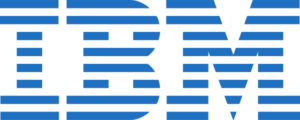
Related References
Rebooting work for a digital gap
In addition to the new approach to performance management, talent management at IBM now includes a personalized learning platform and a personalized digital career adviser.
The platforms use data to infer which skills employees have and connect them with learning to build those skills that are increasingly in demand.
More predictive and prescriptive insights will be transmitted directly to managers and employees at the moment they’re needed most, embedded in the workflow.
(Jessie: the way IBM has engaged its employees to participate in the transformation journey with their voices isn’t possible without the help of AI, for example, Watson text analytics)
The enterprise guide to closing skills gap
IBM Talent Framework
IBM Skills (free resources for learning tech skills and for educators)
IBM awards its three millionth digital badge (and disrupts the labor market)

by WiseOcean | Aug 24, 2020 | Corporate L&D
Several of us from IEEE ICICLE Corporate L&D Group had a chat with Christopher Lind, Head, Global Digital Learning, GE Healthcare to talk about what it’s like to drive digital transformation in an iconic enterprise like GE — a very old company founded by famous Thomas Edison but turned very aggressive in transforming itself into a software company in the past decade or so. (reference: GE’S BIG BET ON DATA AND ANALYTICS)
Chris hosts a cool community called Learning Shark for L&D industry professionals, and also Learning Tech Talks on Friday mornings aiming to “Demystify the landscape of learning tech through unbiased conversations with technologies from around the world.“
Jessie: GE Healthcare and the whole GE group have been viewed as the leader of corporate innovations, often seen in management case studies such as in HBR. What role is the L&D department playing in driving innovations and the transformation of GE?
GE has operations in many industries, and different businesses have different ways to innovate and develop talent. Our role is to challenge the way the organization can reach and develop each employee. The old way of training has been there for decades and it’s not easy to change. You need to find a pain point and push on it really hard to change their way of doing things.
The L&D function is decentralized. L&D is supporting business units’ performances, solving their pain points, and helping them think differently for innovations to get to their goals (for example, selling better by thinking differently about the way they interact with people). The role of L&D is being invisible — people don’t feel we are doing L&D to them; they are just doing their jobs.
Jessie: Could you share the experiences of the digital transformation of L&D in GE Healthcare?
People will say we need to go digital, but their behaviors don’t change. For me, it’s about starting small. We have a long term plan and a short term plan. What are the low-hanging fruits that we can get? Even just getting people to think differently. For example, how can we get people to create digital content and deliver content in digital form? Also, this could threaten the identities of some people in L&D because they used to facilitate in-person training.
I’ve been doing a lot for people’s development and showing L&D colleagues the path forward in the transformation. It’s not just about technology; it’s more about resistance to change, fear of uncertainty, and the feeling of L&D’s identity being threatened by technology. There is a lot of change management involved. I tell a lot of stories to help people understand where we are going.
It needs to start with the executives, so we put executive education online. We have a model we call the “incubator” project to bring in new technology by starting with a small pilot group in a secret mode.
A data-based or data-driven approach is important, but storytelling is equally important. Two weeks ago, we got some data from a behavioral-based initiative we are rolling out. The data looked terrible, but I had an artful way of telling a story about it. Then suddenly, our team agreed that the data is a leading indicator of what we try to do and we should invest more in this project. Different perspectives and interpretations for the same set of data lead to different actions.
Zsolt: Based on your experience supporting digital transformation, what capabilities (or skills) do you think L&D professionals lack today? How did you address this barrier at GE?
Everyone has different digital capabilities, but they at least need to understand how technologies work so they can use new tools to do their job in a new way. That’s why I started Learning Tech Talks. Automation is coming to L&D really fast. I am working on a project so that machines can build interactive e-learning content at a speed much faster than people. L&D practitioners don’t need to worry they will be replaced by machines; they are still needed to architect the content, which the machine still can’t do.
Cheryl: How is your L&D team embedded within the departments? Do they have a data science partner they work with or are they expected to have that skill set?
The role of L&D is still a facilitator, but a digital facilitator now that they need to manage digital communities. There are new roles, but not every L&D person needs to do that. I have system architects and data analysts, so not every L&D person needs that kind of skillset. But they need to understand how data analytics work.
Our L&D department didn’t create another data scientist team (it would become a silo), it’s from a centralized team. The data scientists who work with L&D are like our business partners who understand L&D context and know how to interpret our data. But the data isn’t only from learning systems; we include data on what’s happening in CRM or in engineering works because they matter.
Zsolt: What does your digital landscape look like? What platforms, tools, applications, processes did you find most effective in digital learning?
I don’t have a top list for the tools. Based on the reality and nature of your business, your priority, and the maturity of L&D team, the answers will change. We do need the basic LMS functionalities, but not the corporate LMS. We need something where you can bolt on new things like social elements, discussion threads, and gamification, not to have them all at once. We have a roadmap to build an ecosystem step by step, and the system can meet where we are and get us where we want to go. Content management systems and content development tools are all must-haves. Then, it continues to evolve with animated videos, infographics, voice recognition plus Natural Language Processing (NLP) for giving feedback, AR, VR, etc. My goal is to implement adaptive learning to let AI help give personalized recommendations.
I built a capability map, not a tool map. On the map, we imagine if we can do everything we want, and also know what we have now. Then we need to prioritize. For example, adopting a cloud service won’t take long, but implementing adaptive learning requires preparation. Don’t bite off more than you can chew.
Go out and ask for help. And, technology vendors are our business partners, so we need to align with them well (on vision, perspective, etc.) first to work together well in the long term.
Brandt: Previously you said you have internal incubator projects for new technologies, and you also talk about bringing in outside partners, what’s the line between these two?
I never bring in any outside partner before we have a pretty solid proof of concept. If you bring them too early, people might resist them before they even understand what you’re trying to do. We explore people’s thoughts on new technologies, such as using voice recognition plus NLP to give sales feedback, to collect input before we decide anything.
We invite small groups of people to test new stuff and build prototypes, but they can’t talk to anyone. It works. People who join this secret project really engage with it and become our big advocates. I won’t say it always works perfectly. Sometimes people get too excited and share it out too early and it brings problems. Often I give these projects cheesy names, and we have had a lot of fun with this incubator method, which adds energy behind what we do.
Jessie: Start small, make changes gradually, never underestimate the difficulty of behavior changes, but go “experimenting with prototypes to collect data with users”, these are really great lessons from you.
One example is the VR project I do for soft skills. People looked at me like I have nine heads as I presented it the first time. I still went with my “asking for forgiveness instead of permission” way to give it a try. Then, it took off like a rocket!
Like Thomas Edison, it’s GE, right? We just try it, and sometimes the bulb lights, sometimes it doesn’t, sometimes it takes a long time. It’s scary, it’s exciting, and it’s fun all at the same time.
Cheryl: What Organizational Network Analysis tools are you using at GE? How is it informing management training programs and promotions? (Jessie: this article on MIT Sloan used GE collaboration analytics as a model case)
In terms of the L&D department thinking beyond L&D about the way people are operating and connecting and what’s happening in the organization, we aren’t quite there yet.
Cheryl: Have you explored AI tools that identify and aggregate generally available curriculum resources for use internally?
When I brought in LinkedIn Learning, people thought it was just another content provider; they didn’t see what I was getting at. What I was getting at was being able to do the skills benchmark with other industries and tie that back to our own talent ecosystem (recruiting or developing talents). We were just starting to think about it at about the same time as a lot of other organizations.
In terms of AI, throwing AI at bad data is the recipe for crisis, which is why I have been hesitant to implement AI on our own data. We don’t have a ton of data. LinkedIn can build better AI models than what we can build in-house because of the data they have.
We’ve thought a lot about leveraging automation. Automating the capturing of sales data, for example, because salespeople don’t have time to input data into Salesforce. We have tried a couple of ways to automate content development.
Jessie: Thanks for sharing a great story with us, Chris.




















